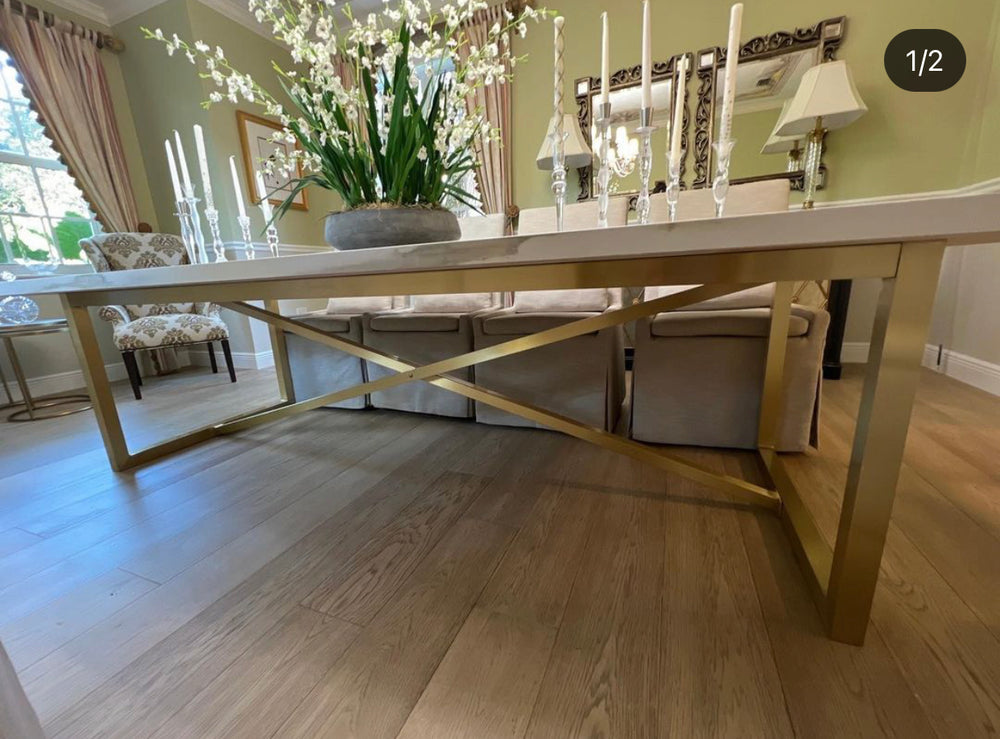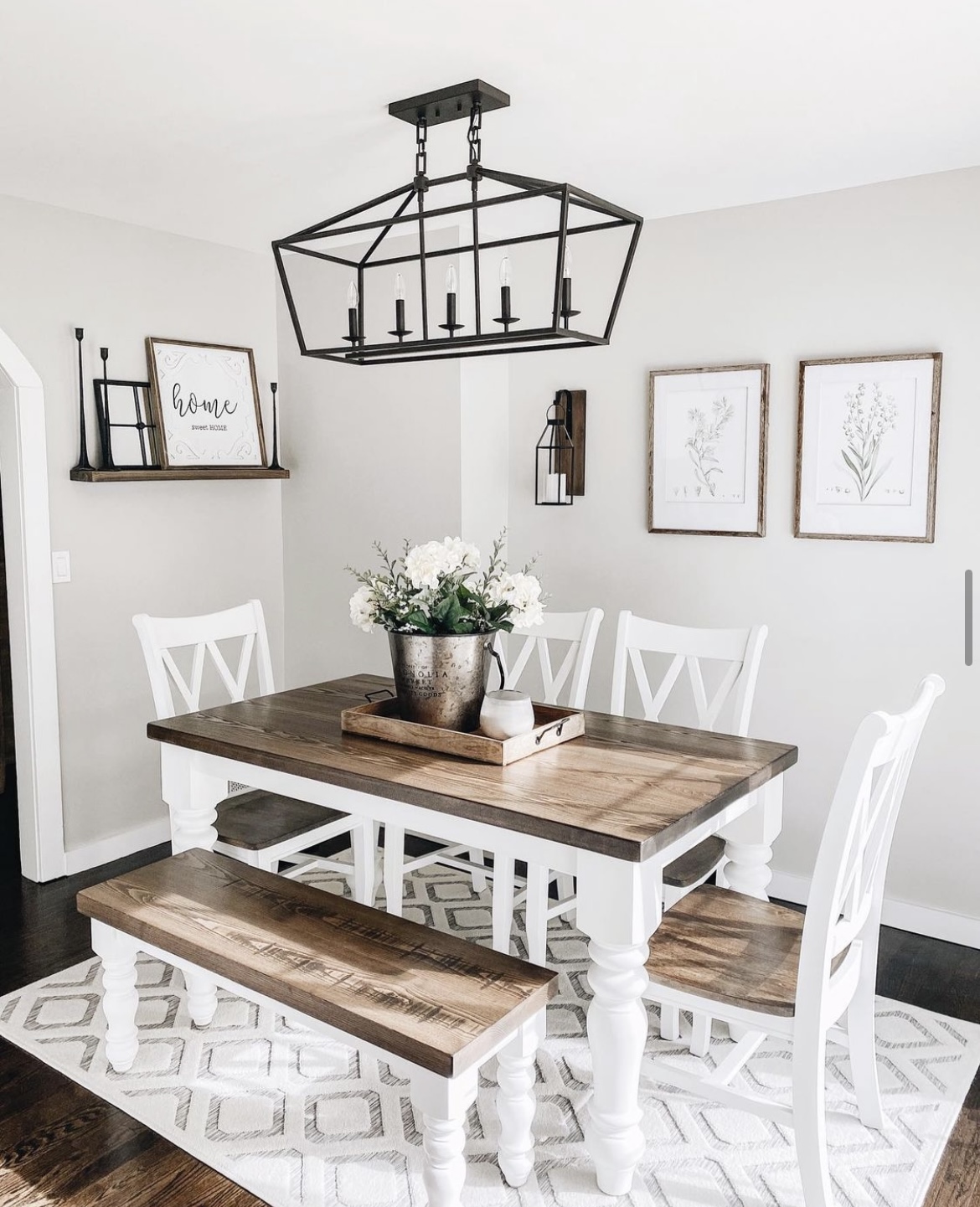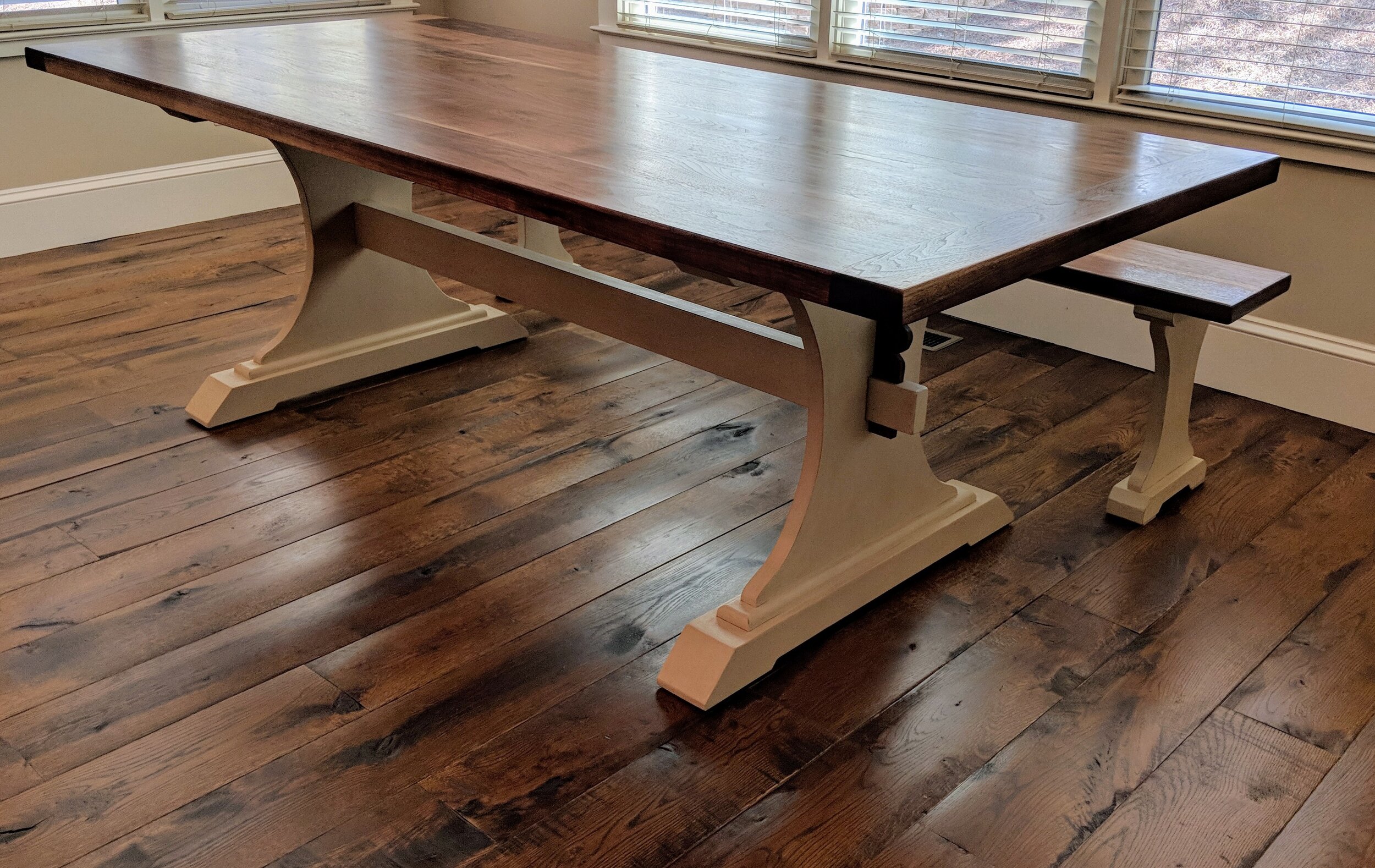The Impact of Dining Room Table Legs on Your Table's Overall Design
The Impact of Dining Room Table Legs on Your Table's Overall Design
Blog Article
Specialist Tips for Putting Up Dining-room Table Legs for Optimum Stability
When it involves setting up dining room table legs, accomplishing optimum security is vital for both functionality and visual appeals. The procedure begins with selecting the right materials and equipment, complied with by meticulous positioning and factor to consider of weight distribution. Each step plays a crucial duty in ensuring that the completed item endures day-to-day usage without compromising safety and security or design honesty. Understanding the nuances of these aspects can substantially affect the total result. What specific techniques can enhance security also additionally?
Choose the Right Legs
When picking the appropriate legs for your dining-room table, it is important to consider both functionality and appearances. The legs you select will substantially affect the total style and stability of the table. First, examine the table's planned usage; if you anticipate frequent celebrations, tougher legs, such as those made from solid wood or metal, might be preferable, as they offer raised longevity and assistance.
Following, consider the height and design of the legs in regard to the table top. Standard eating tables usually vary from 28 to 30 inches in height, so ensure the legs straighten with this standard for convenience. The design of the legs should match the design of the table top-- whether it be contemporary, rustic, or standard. For example, conical legs can add a modern touch, while transformed legs may share a more timeless aesthetic.

Select Appropriate Hardware
Just how can the ideal hardware boost the stability and longevity of your dining-room table? The choice of ideal equipment is essential to ensuring that the legs of your table are securely affixed and able to hold up against normal usage. High-grade screws, screws, and braces supply the required toughness to sustain the weight of the table, along with any additional loads placed upon it during events or meals.
When picking screws, select those made from sturdy materials such as stainless steel or brass, which resist deterioration and maintain integrity gradually. The length of the screws is equally vital; they must permeate deeply into the table's framework without compromising stability. For bolted links, think about utilizing lock washers to stop loosening up as a result of resonance or movement.
Additionally, utilizing edge braces can add added support, especially for larger tables or those with much heavier tops. These braces distribute weight equally and aid keep the table's form. Making certain that the equipment you choose is suitable for the certain products of your table will better boost its general stability and long life, enabling you to appreciate your dining experience for many years ahead.
Ensure Correct Positioning
Proper positioning of eating room table legs is important for both aesthetic appeal and functional stability. Misaligned legs can bring about an irregular table top, which may not only be visually uninviting however additionally jeopardize the table's functionality. To accomplish ideal positioning, start by measuring the range from the table's corners to the leg add-on points. This guarantees that each leg is positioned equidistant from the sides, creating a well balanced appearance.
Use a level throughout installation to verify that each leg is perpendicular to the table top. This step is critical, as also small disparities can escalate right into significant stability issues gradually. It is a good idea to mark the wanted leg positions on the bottom of the table with a pencil or masking tape prior to securing them. This technique functions as a visual overview, permitting modifications her latest blog as required.
Moreover, confirm the positioning after the preliminary screws are tightened up, as adjustments may be necessary before fully safeguarding the equipment. By prioritizing proper alignment, you not just enhance the table's total style however additionally guarantee that it stays secure and useful for several years to find.

Think About Weight Distribution
After making sure appropriate placement of the eating space table legs, it is essential to take into consideration weight circulation to improve security and functionality. dining room table legs. Correct weight distribution is critical website here in avoiding tottering and making certain that the table can support its designated tons without danger of tipping or falling down
When positioning the legs, ensure they are put at equal distances from the center of the table to equally disperse the weight throughout the structure. Take into consideration the weight of the table top and any type of products that will often relax on it, such as ornamental pieces or tabletop home appliances. Tables with larger surfaces should preferably have legs positioned closer to the edges, as this takes full advantage of the base of assistance and reduces the risk of instability.
In addition, if the table is intended for usage in a high-traffic location, think about using larger materials for the legs or including supporting components, such as cross-bracing or a lower have a peek here rack - dining room table legs. These changes can assist maintain equilibrium and prevent changing during use. Inevitably, a well-considered weight distribution approach will significantly enhance the table's overall performance, guaranteeing it remains a eye-catching and functional centerpiece for your eating space
Test Stability Before Use
Evaluating the stability of the dining space table prior to use is a vital step that needs to not be forgotten. If the table reveals instability, recognize the legs or joints that may require change.
Following, examine that all bolts and screws are tightened properly. Loosened connections can cause instability and prospective damage with time. If required, use timber glue on joints to improve stability, making certain to allow adequate drying out time.

Conclusion
In final thought, the installation of dining-room table legs needs cautious factor to consider of materials, weight, hardware, and positioning circulation to accomplish optimum stability. By picking high-grade fasteners and sturdy legs, ensuring accurate alignment, and distributing weight evenly, the structural integrity of the table can be substantially enhanced. Carrying out a security test prior to regular usage additionally ensures that the table will certainly endure daily stress, thus providing a dependable and risk-free eating experience.
When it comes to setting up eating space table legs, attaining maximum stability is vital for both functionality and visual appeals. The legs you select will significantly influence the general style and stability of the table (dining room table legs). Common dining tables commonly range from 28 to 30 inches in elevation, so guarantee the legs straighten with this requirement for convenience.Proper positioning of dining space table legs is vital for both aesthetic allure and practical security.In final thought, the installment of eating space table legs calls for careful consideration of products, placement, weight, and equipment circulation to achieve optimum security
Report this page